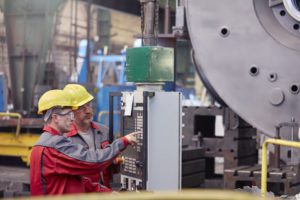It’s a familiar story when it comes to building data centers: you build large enough to deal with the capacity you expect to need some number of years in the future. As a result, for the first few years (and often for the entire lifetime), your data center is way bigger than it needs to be, with far more power and cooling capacity that is necessary – capacity the company is paying for day in and day out.
There is a better way. Whether you’re upgrading an existing data center or building a new one, modular, containerized power and cooling systems enable you to right-size your power and cooling infrastructure for the load you actually have at any point in time. Our analysis shows that this strategy, in combination with current power and cooling technologies, results in a total cost of ownership savings of 30% as compared to the traditional approach.
The savings come from a mix of capital and operating costs. On the capital cost front, you can expect to save about 27% vs. the traditional approach over a 10-year lifetime. A big chunk of the savings, nearly 17%, comes from not overbuilding. Containers enable you to scale capacity quickly so you can avoid paying for power and cooling capacity that you don’t yet need, and may never need – because the worst-case load predicted by data center design managers rarely materializes in practice. The modular containerized approach enables you to avoid that guessing game altogether. Instead, you install power and cooling modules over time, as your IT load grows. So you’re matching power and cooling to your actual requirements, and paying only for what you really need.
In addition, factory assembled containers that have integrated components and controls are also less expensive than assembling the data center infrastructure in the field from a collection of vendors’ parts.
That brings us to the operational savings from the modular approach, which our analysis shows can be nearly 32% over 10 years. Again, much of that savings comes from avoiding a big efficiency penalty from overbuilding. Right-sizing has the potential to eliminate up to 50% of that up-front electric bill.
The technologies employed in the modular containerized systems deliver additional opex savings over their lifetime, including more efficient power and cooling systems, the use of economizer mode, and standard, integrated cooling controls that impact the effectiveness of the cooling plant and its operation on economizer mode.
To learn more about how modular, containerized power and cooling systems save money, check out the Schneider Electric white paper, “TCO Analysis of a Traditional Data Center vs. a Scalable, Containerized Data Center.”




Conversation
We are developing a 40′ ships container as a factory assembled DC. Its factory tested, then shipped to the users site. UPS, Diesel gen and N+1cooling all provided.
Best
Gareth Young
gyoung@cdce.co.uk